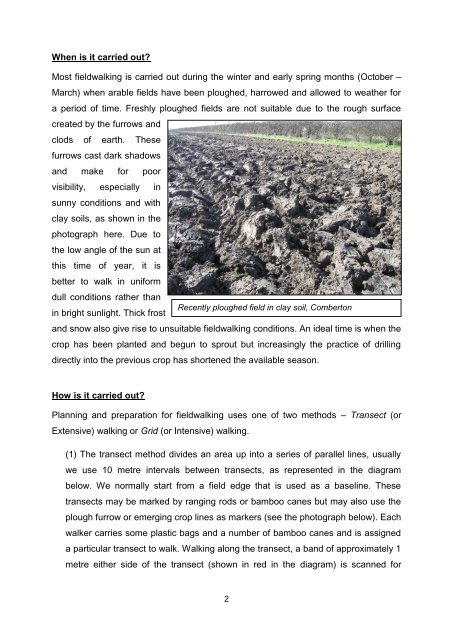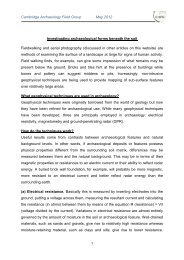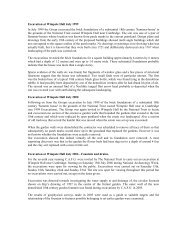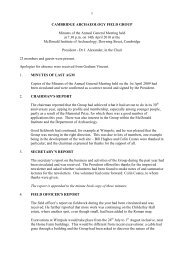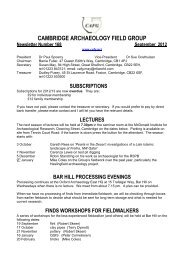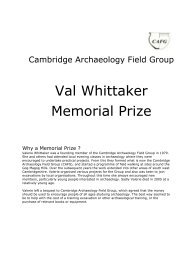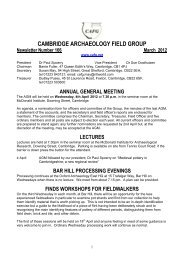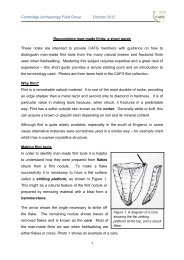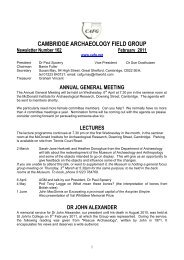Cambridge Archaeology Field Group May 2012 What is fieldwalking ...
Cambridge Archaeology Field Group May 2012 What is fieldwalking ...
Cambridge Archaeology Field Group May 2012 What is fieldwalking ...
You also want an ePaper? Increase the reach of your titles
YUMPU automatically turns print PDFs into web optimized ePapers that Google loves.
When <strong>is</strong> it carried out<br />
Most <strong>fieldwalking</strong> <strong>is</strong> carried out during the winter and early spring months (October –<br />
March) when arable fields have been ploughed, harrowed and allowed to weather for<br />
a period of time. Freshly ploughed fields are not suitable due to the rough surface<br />
created by the furrows and<br />
clods of earth. These<br />
furrows cast dark shadows<br />
and make for poor<br />
v<strong>is</strong>ibility, especially in<br />
sunny conditions and with<br />
clay soils, as shown in the<br />
photograph here. Due to<br />
the low angle of the sun at<br />
th<strong>is</strong> time of year, it <strong>is</strong><br />
better to walk in uniform<br />
dull conditions rather than<br />
Recently ploughed field in clay soil, Comberton<br />
in bright sunlight. Thick frost<br />
and snow also give r<strong>is</strong>e to unsuitable <strong>fieldwalking</strong> conditions. An ideal time <strong>is</strong> when the<br />
crop has been planted and begun to sprout but increasingly the practice of drilling<br />
directly into the previous crop has shortened the available season.<br />
How <strong>is</strong> it carried out<br />
Planning and preparation for <strong>fieldwalking</strong> uses one of two methods – Transect (or<br />
Extensive) walking or Grid (or Intensive) walking.<br />
(1) The transect method divides an area up into a series of parallel lines, usually<br />
we use 10 metre intervals between transects, as represented in the diagram<br />
below. We normally start from a field edge that <strong>is</strong> used as a baseline. These<br />
transects may be marked by ranging rods or bamboo canes but may also use the<br />
plough furrow or emerging crop lines as markers (see the photograph below). Each<br />
walker carries some plastic bags and a number of bamboo canes and <strong>is</strong> assigned<br />
a particular transect to walk. Walking along the transect, a band of approximately 1<br />
metre either side of the transect (shown in red in the diagram) <strong>is</strong> scanned for<br />
2


